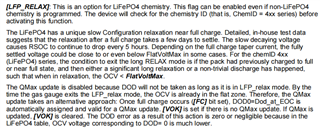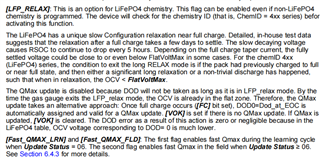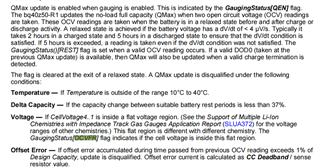Other Parts Discussed in Thread: BQ40Z50, GPCCHEM, BQSTUDIO
Hello
1. What is the FlatVoltMAX of chemical ID 400 and 457?
2. LiFePO4 batteries often cannot be QMAX updated during charging and discharging due to the short relax time. If OCVFR=1, it will take 48H for the OCV measurement. If OCVFR=0, the Qmax update will not necessarily occur.
3. In order to ensure that Qmax can be updated, what should be set up?
4. If OCVFR=1 and FC=1/Taper voltage/taper current are satisfied, will Qmax be forcibly updated after 48 hours?
Thanks







